A Hausfrau's Kitchen - Basics Part 1
This is to be the first in a series of posts especially for a beloved friend in Texas who is not super-confident in her kitchen. (Hugs, H.F.!!!)
There are a few basics. Just remember as you read this that I've been living in my kitchen a long time and have had time to amass multiples of things. Which makes me happy. :-) When I describe what I've been using, it is to illustrate the pros and cons, hopefully. Please don't judge me for having failed so miserably at getting rid of something like a nesting bowl set, just because someone gave me a new one. My family knows that something for the kitchen is always a sure-fire winner as a gift for me.
There are some things in your kitchen that truly need to be items of quality. This doesn't mean expensive, necessarily, but if you're shopping at the dollar mart, you get what you pay for. Cookware is one example. I have a set of Kirkland hard-anodized cookware that I love. I also have a set of stainless steel cookware I received as an engagement present from my parents. It's been serving me well for all these years and is still wonderful. I have a few cast iron pans, a nice oval enameled cast iron dutch oven and a shallower casserole pan (Lodge brand). I would honestly rather hit yard sales and buy better-quality used cookware than go with some really cheap new stuff. Crummy cookware is so frustrating, it isn't worth your time.
If your cookware doesn't already include a steamer insert, it's worth your few dollars to pick one up. Actually, they're handy even if you DO have an insert as part of your cookware set! Mine is like this:
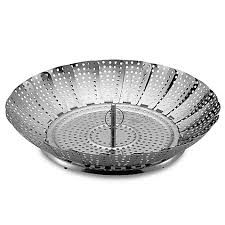 but you can get them in silicone and all kinds of fun styles.
but you can get them in silicone and all kinds of fun styles.
You need a few good knives. Again, they don't have to be most expensive, but get quality. I really can't overstate the importance of both a good, sharp knife that fits your hand, and having the right knife for the job. I have seen more people cut themselves because they were using a chicken-shit little knife for a serious cutting job than I've ever seen someone get hurt with a big sharp knife they use with some confidence.
These are images of the Kitchenaid knives I own, and I love them. Don't get the red-handled ones (sorry, Kitchenaid, but they sucked. Would not hold an edge!). You can get a nice knife set from Costco, Kirkland brand, to start learning what you really want in a knife. I also had a small set of Wolfgang Puck's knives. I liked them very well, but somehow they got lost in the move. Anyway, here are the basics:
 A paring knife. You need this for the obvious: paring/peeling. Also use it for stemming and hulling strawberries, gutting jalapenos (that's the technical term, right?) and a myriad of other tasks on small foods, performing small work.
A paring knife. You need this for the obvious: paring/peeling. Also use it for stemming and hulling strawberries, gutting jalapenos (that's the technical term, right?) and a myriad of other tasks on small foods, performing small work.
 A chef's knife. Big stuff. Dicing large potatoes, cutting acorn squash in half, that sort of thing. Look for one that the handle lines up with the spine (dull edge) with enough offset from the sharp edge of the blade that when your knife cuts through the item and hits the cutting board, it won't smash your knuckles. One basic rule of thumb: if what you are cutting requires some muscle power, use a big knife. Applying much force to a small knife is apt to fillet your finger.
A chef's knife. Big stuff. Dicing large potatoes, cutting acorn squash in half, that sort of thing. Look for one that the handle lines up with the spine (dull edge) with enough offset from the sharp edge of the blade that when your knife cuts through the item and hits the cutting board, it won't smash your knuckles. One basic rule of thumb: if what you are cutting requires some muscle power, use a big knife. Applying much force to a small knife is apt to fillet your finger.
 Santoku knives. My set has these in a 5" blade and a larger about 8" blade. These are not totally necessary knives, but so handy you will reach for them again and again. Once again, watch out for knuckle-smashers.
Santoku knives. My set has these in a 5" blade and a larger about 8" blade. These are not totally necessary knives, but so handy you will reach for them again and again. Once again, watch out for knuckle-smashers.
 Get a nice serrated knife, too. It is the very best for slicing tomatoes or other delicate-skinned items that you don't want to smash in the cutting process.
Get a nice serrated knife, too. It is the very best for slicing tomatoes or other delicate-skinned items that you don't want to smash in the cutting process.


 but I like this
but I like this 
 (I once tried canning pumpkin. The instructions said to peel the pumpkin and I was actually foolish enough to try peeling it with one of those. I was ready to shave my head, move to Tibet and start a new life has hermit in a cave, spinning yaak wool into yarn. Oh, my goodness it was brutal!)
(I once tried canning pumpkin. The instructions said to peel the pumpkin and I was actually foolish enough to try peeling it with one of those. I was ready to shave my head, move to Tibet and start a new life has hermit in a cave, spinning yaak wool into yarn. Oh, my goodness it was brutal!)

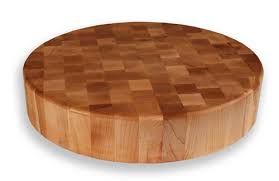
 and a metal one is really nice if your pans permit. You also want one with a rounded leading edge for slipping under crepes or pancakes or anything else you might tear when you try to flip it or lift it.
and a metal one is really nice if your pans permit. You also want one with a rounded leading edge for slipping under crepes or pancakes or anything else you might tear when you try to flip it or lift it. 
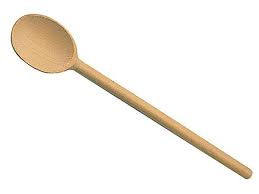 and they're fine.
and they're fine.
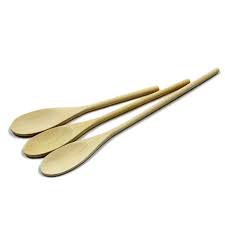 The narrow bowl that shoulders down to the handle gradually causes less blooping out of the pot. Blooping? That's a word, right? The skinny handle fits my petite hand nicely. Different lengths for different sized pots, They work well for me. Look for ones that are already smooth, though. About ten years ago I bought some at a store I now boycott and I thought the roughness would smooth out with use but that isn't really happening. You can also use the long-handled kind for making your children behave at the dinner table. Just ask my Mom.
The narrow bowl that shoulders down to the handle gradually causes less blooping out of the pot. Blooping? That's a word, right? The skinny handle fits my petite hand nicely. Different lengths for different sized pots, They work well for me. Look for ones that are already smooth, though. About ten years ago I bought some at a store I now boycott and I thought the roughness would smooth out with use but that isn't really happening. You can also use the long-handled kind for making your children behave at the dinner table. Just ask my Mom.

 Using one of these on the filling for a pecan pie brought mine to a decadent new level of creamy. Super-handy for anything you might want to puree in small amounts, like the yolks for deviled eggs, vinaigrettes or other dressings, pie fillings, custards, etc. I suggest you look for one that can be immersed in a hot liquid. Then you can use it for sauces and other yummies like that.
Using one of these on the filling for a pecan pie brought mine to a decadent new level of creamy. Super-handy for anything you might want to puree in small amounts, like the yolks for deviled eggs, vinaigrettes or other dressings, pie fillings, custards, etc. I suggest you look for one that can be immersed in a hot liquid. Then you can use it for sauces and other yummies like that.
 Mine is so old that it has an orange plastic body, from back when orange was popular a la Brady Bunch. I use it every canning season for sure, as it does a great job of pressing the cooked apple through the sieve and trapping the skins on top. It also does an amazing job as the first step in mashing potatoes for a super-light fluffy whipped potato. Very handy for making pumpkin pie fill from an actual pumpkin, too. Anything you want to smash, this is your tool.
Mine is so old that it has an orange plastic body, from back when orange was popular a la Brady Bunch. I use it every canning season for sure, as it does a great job of pressing the cooked apple through the sieve and trapping the skins on top. It also does an amazing job as the first step in mashing potatoes for a super-light fluffy whipped potato. Very handy for making pumpkin pie fill from an actual pumpkin, too. Anything you want to smash, this is your tool.
This is another little gadget that I find very handy. Nothing else in the kitchen does exactly this:
 It's meant to be a citrus zester, and of course I use it for that. I also use the little v-shaped blade for scoring cucumbers lengthwise before I slice them for salads, just for pretty. I use it for cutting curls of room-temperature chocolate onto something, and the zester end does a nice job on grating a bit of chocolate into smaller flakes. I've used mine to make radish roses to decorate a veggie tray, but that was a pain in the hiney.
It's meant to be a citrus zester, and of course I use it for that. I also use the little v-shaped blade for scoring cucumbers lengthwise before I slice them for salads, just for pretty. I use it for cutting curls of room-temperature chocolate onto something, and the zester end does a nice job on grating a bit of chocolate into smaller flakes. I've used mine to make radish roses to decorate a veggie tray, but that was a pain in the hiney.
Another item I use frequently is my mortar and pestle. I use it for making spice rubs for meat or fish. I use it for crushing garlic. I use it for grinding some herbs together to include in the oil for dipping bread. I have also used it for crushing aspirin tablets to try to calm a zit down. That didn't actually work, but I tried.
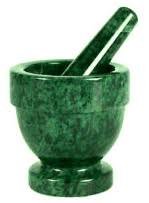
OK, so we didn't cover kitchen electrics, or too many specifics about cookware. Let's save that for the next talk.
And that is my first post in this Hausfrau series. We'll talk more about equipping a kitchen, stocking a pantry and then what do to with all the goodies you have tucked in your cabinets.
So I'm an older woman. Over 50. I've been the hausfrau for nearly 32 years now, and was active in the kitchen of my childhood, too. It is the room in my home that is the most MINE. I know a lot of my readers are also established kitchen bosses, but let's talk about what I think every kitchen really needs (That is, if you actually intend to COOK there....). If you already know all you need to about cooking and baking in your life, you might want to go read something else. Once we've discussed basic kitchen needs, we'll talk about some basic kitchen knowledge. It's the stuff upon which all recipes are actually built.
. All of these images were just pulled from a Google image search. If one of them belongs to you and you don't want me saying nice things about the product, let me know.
There are a few basics. Just remember as you read this that I've been living in my kitchen a long time and have had time to amass multiples of things. Which makes me happy. :-) When I describe what I've been using, it is to illustrate the pros and cons, hopefully. Please don't judge me for having failed so miserably at getting rid of something like a nesting bowl set, just because someone gave me a new one. My family knows that something for the kitchen is always a sure-fire winner as a gift for me.
There are some things in your kitchen that truly need to be items of quality. This doesn't mean expensive, necessarily, but if you're shopping at the dollar mart, you get what you pay for. Cookware is one example. I have a set of Kirkland hard-anodized cookware that I love. I also have a set of stainless steel cookware I received as an engagement present from my parents. It's been serving me well for all these years and is still wonderful. I have a few cast iron pans, a nice oval enameled cast iron dutch oven and a shallower casserole pan (Lodge brand). I would honestly rather hit yard sales and buy better-quality used cookware than go with some really cheap new stuff. Crummy cookware is so frustrating, it isn't worth your time.
If your cookware doesn't already include a steamer insert, it's worth your few dollars to pick one up. Actually, they're handy even if you DO have an insert as part of your cookware set! Mine is like this:
You need a few good knives. Again, they don't have to be most expensive, but get quality. I really can't overstate the importance of both a good, sharp knife that fits your hand, and having the right knife for the job. I have seen more people cut themselves because they were using a chicken-shit little knife for a serious cutting job than I've ever seen someone get hurt with a big sharp knife they use with some confidence.
These are images of the Kitchenaid knives I own, and I love them. Don't get the red-handled ones (sorry, Kitchenaid, but they sucked. Would not hold an edge!). You can get a nice knife set from Costco, Kirkland brand, to start learning what you really want in a knife. I also had a small set of Wolfgang Puck's knives. I liked them very well, but somehow they got lost in the move. Anyway, here are the basics:
And then. Oh, yes. If you are going to take the time or spend the money to put a loaf of good, fresh bread on your table, PLEASE invest in a decent bread knife. There simply is no other tool for this job that will do justice to that lovely loaf. It's disrespectful to the baker to smash the bread to cut it. I have two bread knives and I love them both. A very nice one was included in the Kitchenaid block set:
and I also own a Cutco bread knife I cherish:
With a few good knives, you can skip over all the adorable kitschy crap on zulily for slicing mushrooms, slicing eggs, hulling strawberries, dicing onions, etc. etc. We already invented a great tool for that: the knife. That said, I have always rather wanted a mandolin, but.... alas. Never got around to buying one.
Kitchen shears are incredibly useful, too. You want the kind you can drop into the dishwasher, so office scissors are not really the right tool. I also picked up one of these: 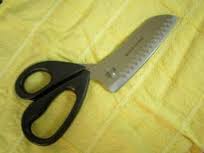 santoku shears. I use them all the time for things like cutting up vegetables right into the pot...carrots in particular.
santoku shears. I use them all the time for things like cutting up vegetables right into the pot...carrots in particular.
A nice vegetable peeler is very handy, too, and the one Kitchenaid makes is my favorite. My sister prefers this style:
I used one of these for many, many years and I didn't die, but it wasn't nearly as comfortable, or sharp.
There are a host of other very handy knives and you will quickly find your favorites. A good carving knife is great to have, especially if you are going to be roasting turkeys and standing rib roasts and such. Also, get a knife sharpener and learn how to use it. Dull knives are dangerous.
Along with the knives, you want to make sure you have at least one good cutting board. I find the cutting mats to be very handy, since you can pick them up, roll them and pour whatever you just chopped right into the pot. **tip: put a double-thickness of slightly-damp paper towel under your cutting mat or board to keep it from slipping while you work. You can use the paper towel for a quick wipe when you're finished, too!**
Don't go with one of those very cute and stylish glass cutting boards, though. They are very tough on your knife's edge. If you want to make your kitchen even happier and homier, invest in a nice chopping block, too:
Moving on.
You need a nice set of nesting mixing bowls. I have a Pyrex set, a Cuisinart stainless steel set and a Costco melamine set, and I use all of them regularly. How to choose? The main question is: what will you be mixing, mainly? Will you want to be able to put the bowl in the microwave? Can't beat glass bowls for that. If you want to whip cream to it's best, highest volume, choose stainless steel and chill the bowl (and the beaters) before you whip the cream. You can use either glass or stainless steel to improvise a double-boiler, too. If you're clumsy or just love whimsical colors and patterns, melamine works great. Melamine is actually a great choice overall, just bear in mind that it isn't generally microwave safe or oven safe.
You need some good quality baking sheets. A nice assortment of varying sizes, and get the heaviest weight you can find. It is very disappointing to have a baking sheet "pop" in the oven and let stuff run out. Has this happened to you? Diagonal corners of a sheet bending up and making the sheet distort? They always go back to normal when they cool, but it sure sucks if you're baking something that can run over. A pizza pan is also a very handy thing, even if you don't make pizza. They're perfect for putting under that cherry pie, since the bubbled-over cherry pie filling is so hard to clean from the oven floor. I use a deep-dish pizza pan for a bain-marie when I make cheesecake. Oh! I also use it for making deep-dish pizza! Go figure.
Measuring cups. You do, actually need both liquid and dry measuring cups. These measures are not always interchangeable. For very little money you can get a good set of liquid measuring cups in a 1- 2- and 4- cup set. I just looked on Amazon and a Pyrex set is $13 with free shipping. Mine are the Anchor Hocking brand and I've had them since Moby Dick was a minnow. You can find these at any thrift store, too. You also need dry measuring cups, and chances are very good that if you buy a set of melamine mixing bowls, measuring cups and spoons will be included. If not, just get some with a nice sturdy handle so it doesn't break when you're scooping up brown sugar or flour.
Measuring spoons. Maybe also included with a melamine bowl set, but I also have a set of these, and I love them: 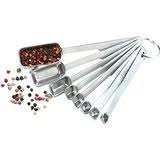 They fit inside a spice jar and that is so handy!!!
They fit inside a spice jar and that is so handy!!!
Some other basics:
Parchment paper. You'll see I use a lot of parchment paper, if you check out my recipes. Not only does it shorten cleanup to make your life shiny and happy, it also helps to prevent the bottom of cookies and pastries from burning, keeps things like kale chips from getting stuck, You can cook fish, chicken and vegetables in a parchment paper pouch (en papillote) to hold in moisture and flavor, and because it is already oiled, you can lower the amount greasing or spraying you might normally do.
Aluminum foil. I think you need two kinds: regular and a roll of heavy-duty. Extra-wide is handy, too. Most things you can do with regular foil, but if you want a longer cooking time such as if you are going to grill artichokes in foil pouches to steam them, heavy duty works better.
Bags. Gallon size and quart size. If you're going to use them as an on-the-fly pastry bag, go with freezer bags.
A good colander. One big enough to hold a lot, with small enough holes to not lose too much, and preferably with legs or a footed one so it can stand on its own in the bottom of the sink. Another tip: if you are draining hot pasta or something, run some cold water down the drain at the same time as you are pouring the boiling water. Most of us have plastic pipes, you know, and you don't want to damage them.
Box graters are very handy... that is, graters shaped like a box, rather than a grater for grating boxes. This is a place where a little extra money will serve you well. I have this one:  and it is the best one I've ever used. You can use it for the obvious thing: grating cheese or grating potatoes for hash browns. Use it to grate butter when the recipe calls for softened butter but you forgot to take it out of the fridge. Grate zucchini for bread or to make zucchini cakes (like crab cakes, but no crab). Grate a little onion to throw in potato salad so you get the flavor without getting a sharp crunchy bite of onion bit. The other sides have finer grating for lots of citrus zesting, for example, and there is a straight blade size that is perfect for slicing cucumbers or cheese. This tool will also quickly grate your skin when you get down to the nub of the potato. It's a great way to amp up the protein content of the hash browns! Just don't tell you guests the secret ingredient. People are funny about that, even when they aren't vegans.
and it is the best one I've ever used. You can use it for the obvious thing: grating cheese or grating potatoes for hash browns. Use it to grate butter when the recipe calls for softened butter but you forgot to take it out of the fridge. Grate zucchini for bread or to make zucchini cakes (like crab cakes, but no crab). Grate a little onion to throw in potato salad so you get the flavor without getting a sharp crunchy bite of onion bit. The other sides have finer grating for lots of citrus zesting, for example, and there is a straight blade size that is perfect for slicing cucumbers or cheese. This tool will also quickly grate your skin when you get down to the nub of the potato. It's a great way to amp up the protein content of the hash browns! Just don't tell you guests the secret ingredient. People are funny about that, even when they aren't vegans.
Your basic utensils -- and bear in mind I have a mild hoarding compulsion about utensils so it's difficult to admit this -- require just a few things, really. Your utensil choice is going to be based partly on your cookware, as some kinds of cookware scratch easily. You need two pancake-turners: one that is straight across the front edge like this:
Get an assortment of good wooden spoons and over the years I have discovered a favorite shape. I have some like this:
I have some like this  made from olive wood, and they are beautiful but fit my hand very poorly. I use them for serving and not for any cooking.
made from olive wood, and they are beautiful but fit my hand very poorly. I use them for serving and not for any cooking.
I have some with a rubberized coating on the handle, too. But time and again, I reach for the old standby:
You need a wire whisk. Me, I need several.  It's very important to get one with a comfortable handle because this is a tool you often use for a long time, such as stirring hollandaise or other sauce, or beating eggs or whipping cream. I've tried a lot of versions of this, from one that is kind of spoon shaped, to one that looks more like a spring. Now I see them in other kinds, too, but this is a classic and has passed the test of time in my house. You may want to get one in silicone, too, but the wire kind shouldn't scratch any kind of pan, anyway.
It's very important to get one with a comfortable handle because this is a tool you often use for a long time, such as stirring hollandaise or other sauce, or beating eggs or whipping cream. I've tried a lot of versions of this, from one that is kind of spoon shaped, to one that looks more like a spring. Now I see them in other kinds, too, but this is a classic and has passed the test of time in my house. You may want to get one in silicone, too, but the wire kind shouldn't scratch any kind of pan, anyway.
You need a slotted spoon, a ladle and some large spoons for things like plopping a big ol' heap of taters on some cowboy's plate:
Tongs are very useful and I suggest you give them a squeeze to see how easy it would be to hold them for a while. Any little bit of arthritis in your hands and you will be hating life with the wrong tongs.
One very handy thing to have around is a handheld blender, a.k.a. a stick blender. Something like this:
Do you want to make the creamiest mashed potatoes ever? Do you want to make apple butter? Do you want to make tomato puree but don't especially want to skin all the tomatoes? Then you need one of these:
This is another little gadget that I find very handy. Nothing else in the kitchen does exactly this:
Another item I use frequently is my mortar and pestle. I use it for making spice rubs for meat or fish. I use it for crushing garlic. I use it for grinding some herbs together to include in the oil for dipping bread. I have also used it for crushing aspirin tablets to try to calm a zit down. That didn't actually work, but I tried.
OK, so we didn't cover kitchen electrics, or too many specifics about cookware. Let's save that for the next talk.
And that is my first post in this Hausfrau series. We'll talk more about equipping a kitchen, stocking a pantry and then what do to with all the goodies you have tucked in your cabinets.

Comments
Post a Comment
Thank you for taking the time to visit me! I truly appreciate your comments!